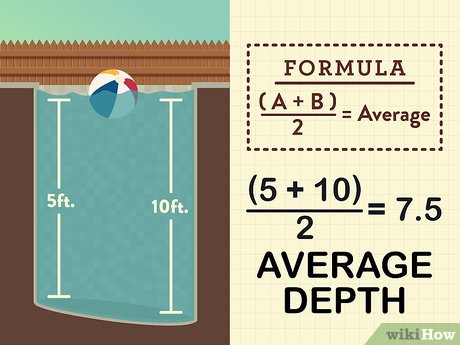Contents
Measuring the depth of your swimming pool is not just a routine task; it’s a vital aspect of maintaining a safe and enjoyable swimming environment.
Understanding the depth of your pool can help you ensure safety for swimmers, determine the best swimming techniques, and guide you in making informed decisions about renovations or repairs. Many pool owners don’t realize that incorrect depth measurements can lead to safety hazards, improper water balance, and even legal issues.
In this article, we’ll explore practical steps to accurately measure the depth of your swimming pool, ensuring a safe and fun experience for everyone.
Measuring swimming pool depth is crucial for safety, maintenance, and overall enjoyment. This comprehensive guide will lead you through various methods for measurement, important safety considerations, and tips for keeping your pool in optimal condition.
By following these steps, you’ll gain confidence in knowing your pool’s depth and contribute to a safer swimming environment.
Why Measuring Swimming Pool Depth Matters
The depth of a swimming pool impacts several key areas, from swimmer safety to maintenance practices. Let’s look at some critical reasons why knowing your pool’s depth is essential.
Safety for Swimmers
One of the most significant reasons for measuring pool depth is to ensure the safety of swimmers. Different activities are suitable for specific depths, and knowing these measurements can prevent accidents.
For instance, diving should only occur in deeper areas of the pool. If swimmers are unaware of the depth, they may inadvertently put themselves at risk. Regularly measuring and marking depth levels can help alert swimmers to safe zones, thereby preventing injuries.
Maintenance and Water Balance
The depth of your pool also plays a significant role in its maintenance. Understanding the depth helps in calculating the correct amount of chemicals needed to maintain water quality. Pools with varying depths may require different treatment strategies, especially when it comes to balancing pH and alkalinity.
Additionally, knowing the depth allows pool owners to monitor water levels accurately, ensuring that the pool doesn’t overflow or become too shallow, both of which can cause significant issues.
Compliance and Regulations
Many municipalities have regulations regarding swimming pool depth, especially if children frequently swim in the pool. Familiarizing yourself with local laws can help you avoid fines or legal issues in case of accidents.
Regular measurements can also be helpful when considering pool renovations. If you plan to alter the depth, understanding your current measurements will ensure compliance with safety standards and local regulations.
Methods for Measuring Pool Depth
There are various methods to measure the depth of your swimming pool. Below, we will explore some of the most effective techniques.
Using a Measuring Tape
The simplest and most straightforward way to measure pool depth is by using a measuring tape. This method is particularly effective for above-ground pools or areas where visibility is limited.
- Gather your supplies: You will need a long measuring tape, ideally one that extends at least 10 feet, and a weight (like a small stone or a washer) to help keep the tape submerged.
- Submerge the weighted tape: Drop the weighted end of the tape to the bottom of the deep end of the pool.
- Read the measurement: Pull the tape up slowly and record the depth.
Ensure you measure both the shallow and deep ends to understand the pool’s full depth profile.
Using a Pool Depth Marker
If you prefer a more permanent solution, consider installing a pool depth marker. These markers are often used in commercial pools and can provide instant depth information.
- Choose a suitable marker: Purchase a depth marker from a pool supply store that can be adhered to the pool wall.
- Install the marker: Follow the manufacturer’s instructions for installation, ensuring it is visible and clear.
- Regularly check: Make it a habit to check and verify the marker against manual measurements to ensure accuracy.
This method is beneficial for ongoing reference, especially in pools with varying depths.
Utilizing a Submersible Depth Gauge
For those who want a high-tech solution, submersible depth gauges can provide precise measurements without the need for manual tools.
- Purchase a depth gauge: Look for one designed for swimming pools, considering features like accuracy and ease of use.
- Submerge the gauge: Follow the device’s instructions for submersion and take note of the readings.
- Maintain the gauge: Regularly check the battery and calibration to ensure accurate readings.
This electronic method is especially useful for larger pools, providing quick and reliable depth information.
Safety Considerations While Measuring Depth
While measuring pool depth, safety should always be a top priority. Here are some important considerations to keep in mind.
Supervision is Key
If children are present, ensure they are supervised during the measurement process, especially if you’re using long measuring tapes or submerging your hands in the water.
A designated adult should always be present to monitor the situation, ensuring the safety of all swimmers.
Check for Hazards
Before measuring, inspect the pool area for any hazards. This may include slippery surfaces, broken tiles, or sharp objects that could pose risks during measurement.
Using non-slip footwear can minimize accidents, and clearing the area around the pool can prevent falls.
Be Mindful of Pool Chemicals
When measuring, ensure that you are not exposing yourself to any chemicals that may be in the pool water. Always wait until the pool has been adequately treated and allow sufficient time for chemicals to balance.
Safety goggles and gloves are recommended when working with chemicals to ensure proper safety precautions are taken.
Measuring the depth of your swimming pool is essential for ensuring a safe, enjoyable swimming environment. Whether you choose to use a simple measuring tape, install permanent depth markers, or utilize advanced gauges, understanding your pool’s depth will empower you as a pool owner. Always prioritize safety during this process, ensuring that all swimmers are protected. Regular maintenance and measurement can significantly enhance your swimming experience and promote a safe atmosphere for everyone involved.

